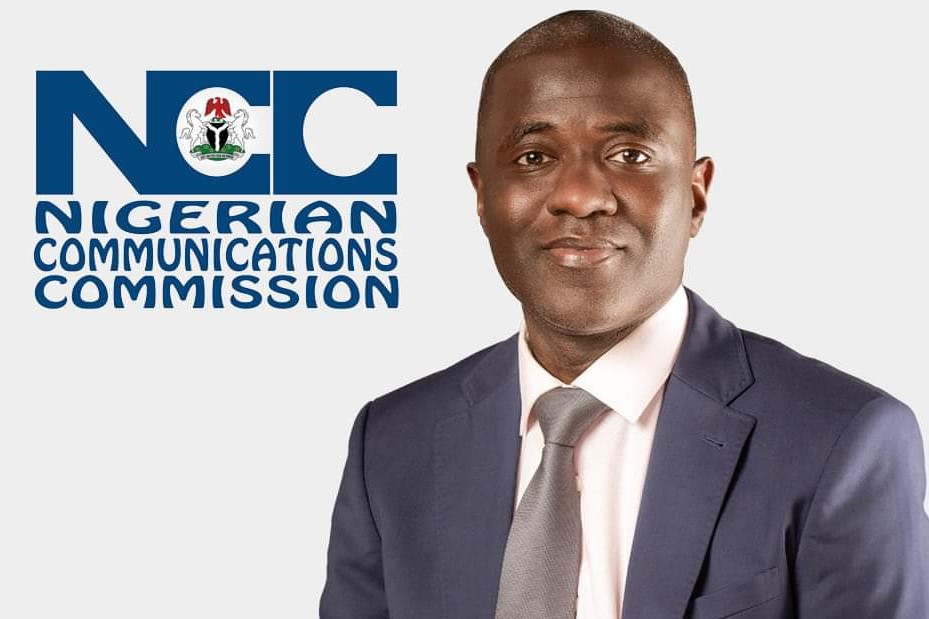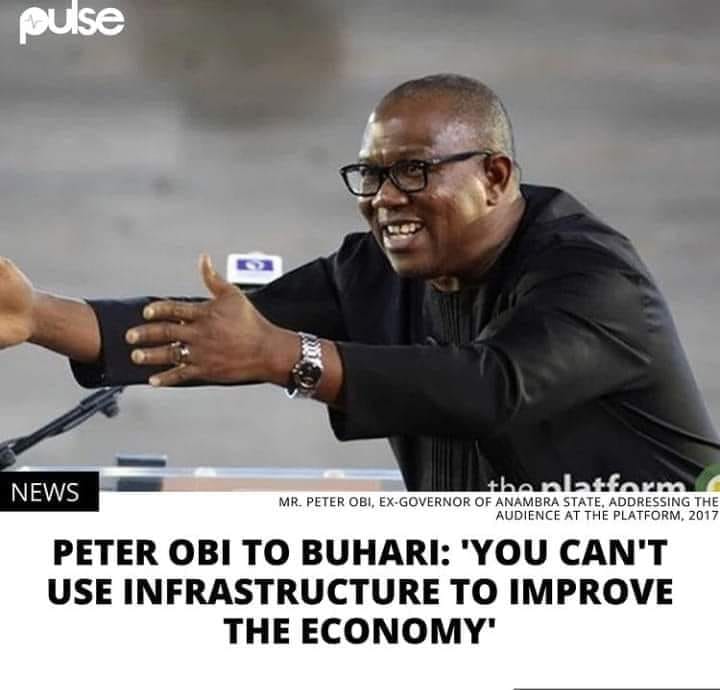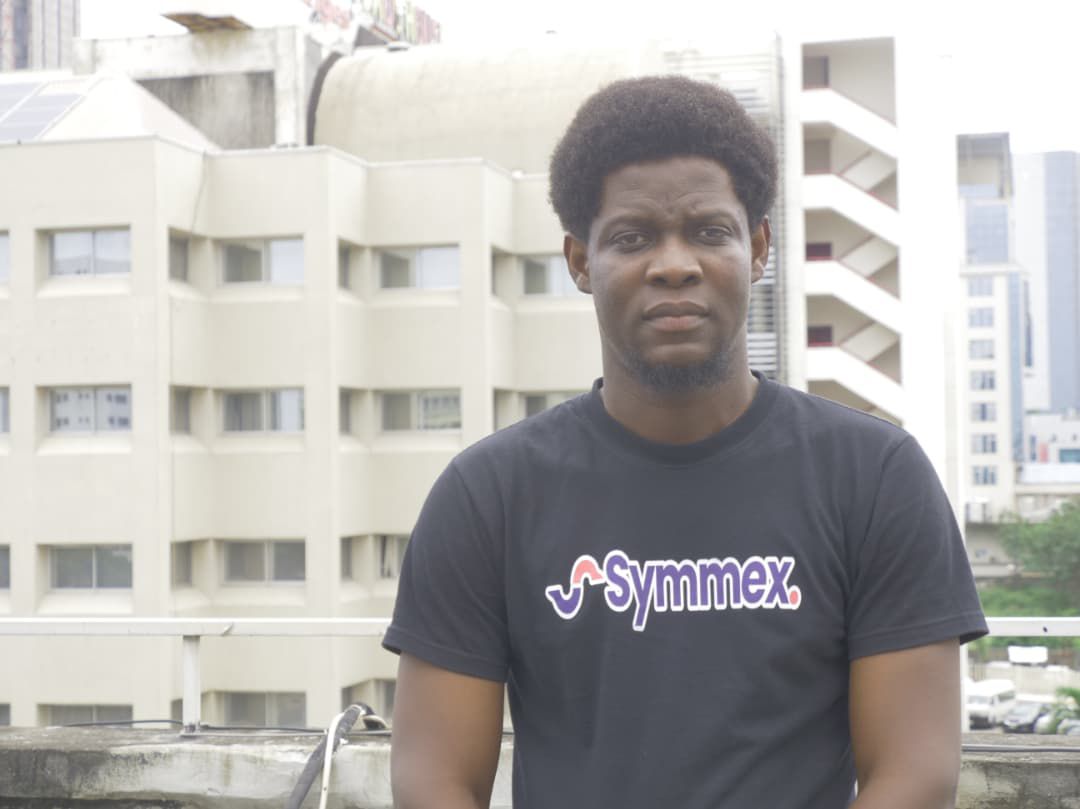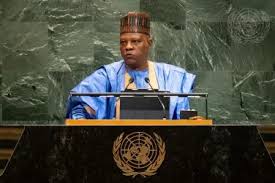I like Mr Peter Obi. Trust me, I do. I first got to know about him way back in the 90’s, while he was still in the UK, I think, courtesy of the early editions of Ovation, before the magazine morphed into what people now know it as. Already wealthy then, his simplicity and outlook to life was quite unlike of that of the average Nigerian big man.
His plan for public office and thought around governance was quite different. I remember him saying something to the effect of withdrawing his children from where they were studying to attend public schools should he become Governor. I wouldn’t know if he eventually did upon assumption of office. Circumstances might not have allowed for that. I just like the man.
I take responsibility for being one of those who pushed his story of one pair of shoes and one wrist watch back then. Even though, that was found to be not quite as presented, I do not think it took much off his spartan, almost austere outlook to life. That I consider commendable, for such a man of immense means, in a society overtaken by the spirit of conspicuous consumption with poverty staring it in the face.
I also think he is quite passionate about Nigeria and governance, impressed that he is one of the few who actually invests a bit of time in thought, always thinking about what is being done, how it is being done and how it can be done better or differently. Whereas one might not agree with some of his prescriptions, especially of late, not being sure of how much of what he says is politics and what is a dispassionate interrogation of policy, there is no denying that his heart is largely in the right place.
I am quite aware of the controversies that have trailed many of his public appearances, with data not always in sync with his China-centric comparisons and k-legged prescriptions. But still, I didn’t think it much of a dent on his credentials. Reeling statistics off-hand, as he is wont to do, for whatever reasons, must have its side effects, one being the risk of inaccuracy.
But when recently I came across the point attributed to him that you do/can not grow the economy through investment in infrastructure, I had to finally pay attention. Yet, didn’t even do that until this morning, looking to cite his opinion as a counter-narrative to the argument we are making in the next edition of the magazine which is preponderantly pro-infrastructure.
Peter Obi and Bangladesh
So, I finally caught up with Mr Peter Obi, as reported below:
“Obi stated that Bangladeshi’s GDP as of 2008, stood at $101 billion, while its per capita income was $753, also its debt was $50 billion, which represented 50 percent of the GDP size. He further noted that the Bangladeshi economy is presently worth over $300 billion while the per capita has leaped three-fold from $753 to over $2,000 and the national debt stands at $102 billion.
Obi said: “Their debt has actually reduced because instead of being 50 percent of their GDP, it is now about 30 percent. What happened? Bangladesh took the money to SMEs. Today, Bangladesh is the second biggest exporter of textiles in the world.
“There are over 5,000 textiles in Bangladesh and they are making over $35 billion in textiles and textile materials, which is about what we are making from oil.
“I checked that other countries have done the same thing. They throw money into SMEs, and also invest in education. They did not go on building more infrastructures.”
Interesting. Now, let us break this down, putting into perspective that this was a comparative analysis between Nigeria and Bangladesh and the economic economic road taken. The total debt of Bangladesh is put at $102 Billion, that of Nigeria, from what we know is about $90 Billion. GDP for Bangladesh is about $330 Billion, while that for Nigeria is about $400 Billion.
So, Mr Obi’s argument is that the Bangladeshi economy is a reference point. He is comfortable with Bangladesh’s borrowing and trajectory, even with its debt profile (higher than Nigeria’s) and debt to GDP ratio (also higher than Nigeria’s), because they “threw” their loans into SMEs and human capital development, while Nigeria, instead, has been investing in infrastructure. As he said, you cannot grow or improve the economy by investing in infrastructure.
Even when it is obviously mischievous to make the point that the current government has only been investing in infrastructure, neglecting support for SMEs, Business and human capital development. Not minding the fact of an obvious nexus that there is between investment in infrastructure and these other areas, we must delay taking on the fundamental question he has raised about investment in infrastructure to interrogate the Bangladeshi example Mr Obi has thrown up.
But first, to Mr. Peter Obi’s comparison of the $35 billion he reports Bangladesh to be making from “textiles and textile materials” with what he says Nigeria is making from oil. That is strange. I suspect he must be confusing the $35 billion, which is revenue accruing from oil to the Federation account (governments) to the Bangladeshi $35 billion which is, in fact, earnings from export of garments by investors (mostly foreign), which is not revenue accruing to government, as the figure quoted for Nigeria is.
Dealing with actuals – In 2019, Nigeria’s total exports was, in fact, $63.8 Billion, with revenue accruing to government from oil and gas being $34.22 billion. In the same year, while I could not isolate the revenue that accrued to the Bangladeshi government from total exports which was $39.34 Billion, the guess is that it is nothing compared to what comes from oil exports, with government directly involved. Of course, exports reflects on the health of the GDP, but earnings from the export of garments by private investors would have had little or no significance on government purse and its debt portfolio. Difficult as it is to make sense of this comparison with Bangladesh, there is little doubt that Nigeria with its earnings, lower debt to GDP ratio, is in better shape, irrespective of what use borrowing is being put to.
Bangladesh – perspiration, not inspiration
Back to Bangladesh, there is no doubt that the country has made some remarkable progress, given where it is coming from. But, as Shahid Yusuf points out, apart from the fact that this growth is largely built around the success it has made as an “exporter of garments, which account for 84 percent of its total exports…Very little is derived from total factor productivity—below 1 percent per annum since 2000—the primary determinant of long-term growth of incomes for all countries. To paraphrase Paul Krugman, it is perspiration, not inspiration, that is responsible for Bangladesh’s performance to date”.
Miracle or Mirage?
On account of this, some experts wonder not only about how sustainable the growth Mr Peter Obi is pointing us to is, some wonder if it is not, in fact, a mirage. A closer look raises other questions over the quality of this economic record. Yusuf is convinced that Bangladesh is “heading towards a (lower) middle-income trap, notwithstanding its recent growth performance”.
He identifies the following suspects :
1. Extreme dependence on a single category of exports and the low share of exports to GDP.
2. Falling share of exports in GDP, which fell to 15 percent in 2019 from a peak of 20 percent in 2012.
3. Diversification is slowed by the weakness of private investment in new industries, which has been exacerbated by CONSTRAINTS ON THE AVAILABILITY OF CREDIT, ESPECIALLY TO SMALL AND MEDIUM ENTERPRISES (Strange that SMEs there have to deal with that, given that Mr. Peter Obi believes that it is investment in SMEs there that is responsible for the growth there, a reason he wants us to so same rather than prioritise investment in infrastructure).
“Bangladesh remains focused on a narrow range of relatively low-value garments more than forty years after the industry took root in 1977-1982, following investment by Korea’s Daewoo in Desh Garments and denationalization of the textile industry (T-shirts, trousers, sweaters, and shirts remain the dominant export items and 80 percent of exports were to the relatively slow-growing markets in the European Union and the United States.”
Yusuf is obviously not as enthused about Bangladesh as Peter Obi is. He foresees troubles ahead for Bangladesh, with the challenges it faces. “Exporters and importers face transactions cost much higher than those impinging upon competitors in Southeast Asia. Their woes are compounded by the unreliability of electric power, in spite of private investment in generating capacity, because TRANSMISSION AND DISTRIBUTION INFRASTRUCTURES have been neglected”. Infrastructure an issue? Were we not told to look in the direction of Bangladesh which prioritised investment in SMEs rather than infrastructure?
Bangladesh and Infrastructure
A bit of study not only links the gains made in Bangladesh to investment, over time, in infrastructure, we find that the link between investment in infrastructure and economic development is one that has been established by Scholars since the 1980’s.
Akhtar Mahmood counters the dominant narrative which had either downplayed the role of government and infrastructure in the Bangladeshi story or ignored it, and sometimes making it the villain, without whom development happened or had to stay out of the way of those who made it happen. To Aktar, however, “government has been a major player in the development journey of Bangladesh since independence in 1971. By ignoring this perspective, most narratives on Bangladesh have missed an opportunity to demonstrate how a government, weak in many respects, can nonetheless make strategic contributions to development over a prolonged period”.
He cites government’s investment in construction, first, of “a good network of roads linking the medium-sized cities to the larger ones, including the capital Dhaka and the major port city, Chittagong” and later construction of rural roads as critical to the economic growth experienced by Bangladesh. “This situation was remarkably transformed within a span of 10 years, from 1988 to 1997, with the construction of the so-called feeder roads. In 1988, Bangladesh had about 3,000 kilometers of feeder roads. By 1997, this network expanded to 15,500 kilometers. These “last-mile” all-weather roads helped connect the villages of Bangladesh to the rest of the country”.
I doubt that Akiz will agree with Mr. Peter Obi that it was investment in SMEs rather than infrastructure that was responsible for the economic growth witnessed in the country. I would also find out that the intervention by the government, specifically with support for the production of rice, the country’s main crop, through a number of initiatives over time, was also cited as a part of the factors responsible for growth. “After ups and downs in the 1960s, the production of rice, the country’s main crop, moved to a trajectory of modest, but sustained, growth from 1972. Use of high-yielding varieties (HYV) of rice, first introduced in the 1960s, expanded. Also, aided by irrigation, there was a significant expansion of rice cultivation in the dry winter months”.
Infrastructure Investment and Growth
It would appear that the relationship between investment in infrastructure and economic growth took a while to be established According to Musharrat Azam and Sabrina Shareef Badhan, “the notion that investment in infrastructure could have an impact on a region’s rate of productivity and therefore its economic growth did not get attention until the late 1980’s. This perception was altered by the work of Aschauer in 1989 when he published a series of papers that investigated the relationship between infrastructure investment and productivity for the United States and other developed nations. Aschauer found a strong positive correlation between productivity and public capital for core infrastructure that consists of highways, mass transit, airports, electrical and gas facilities, water, sewers, police and fire stations and hospitals.”
They further explained how this works :”Infrastructure plays a pertinent role towards economic growth. There are different approaches to how infrastructure achieves this. Infrastructure such as energy, electricity, water, roads and telephone serve as direct input to production process. Improvement of these utilities reduce the cost of production and transaction, increase productivity and returns to scale. These lower costs and higher returns induce domestic private and foreign investment in the economy. Lee and Anas (1992) and Hasnath (1993) found that aggregate infrastructure also increased productivity of other factors of production and augmented the rate of technological innovation. Human capital infrastructure for example education and health service increase worker productivity and raise wages. Furthermore, infrastructure projects raise income through direct employment creation in construction and operations.”
With Bangladesh as a case study, Azam and Badhan were able to establish a positive correlation between infrastructure development and growth. Making use of the “Partial Adjustment Model”, with short run and long run infrastructure elasticities of economic growth calculated” their findings affirm that there is positive elasticity between investment in social services (short term); infrastructure (long term) and economic growth. On that score, they make the case that “Bangladesh still needs to invest heavily in infrastructure and thereby improve the living standards of its citizens”.
That confirms argument made elsewhere that in spite of whatever progress that has been made, “infrastructure bottlenecks are among the largest inhibitors of economic growth in Bangladesh. The World Bank estimates that Bangladesh must spend $7.4 billion to $10 billion a year until 2020 to bring its power grids, roads and water supplies up to the standard needed to serve its growing population. The transportation sector alone will require between $36 and $45 billion of investments. Other priority sectors identified by the World Bank include: water supply and sanitation, solid waste management, and telecommunications”.
Before we know it, someone will say it is Bangladesh that we are comparing ourselves with, conveniently side-stepping the point that it was Mr. Peter Obi who took us to Bangladesh and that this is simply an interrogation of his argument and prescription. In any case, investment in infrastructure to drive growth and development is a path not that uncommon. As with previous Presidents, investment in infrastructure is a major talking point.
It is President Biden who appears more invested in it with a huge infrastructure plan. The Biden $2 trillion plan is targeted at fixing highways, rebuilding bridges, upgrading ports, airports and transit systems. The plan is to modernize 20,000 miles of highways, roads, and main-streets; fix the ten most economically significant bridges in the country in need of reconstruction; repair the worst 10,000 smaller bridges, providing critical linkages to communities; replace thousands of buses and rail cars, repair hundreds of stations, renew airports, and expand transit and rail into new communities; deliver clean drinking water, a renewed electric grid, and high-speed broadband to all Americans, among other projects, over the next ten years.
If America is thinking of infrastructure, in spite of the advancement it has made, I doubt that prioritising this by Nigeria can be wrong. I suspect that there must have been a mix-up somewhere for Mr. Peter Obi. I still like him though. I believe he should have a place in public service, even if in advisory capacity. I know he loves statistics. I do too. But I don’t see a place for him at the Nigerian Bureau of Statistics. I think it would do him well to keep away from comparative statistical analysis for some time. I believe that he would do well in charge of the Bureau of Public Procurement, for reasons that are rather obvious.
By Simbo Olorunfemi





